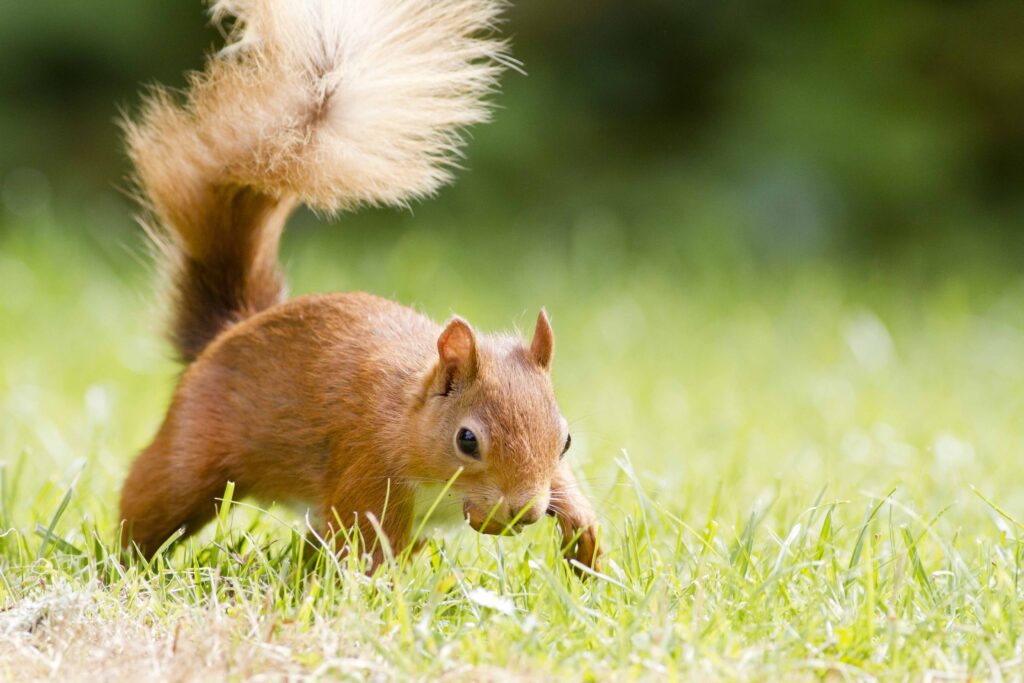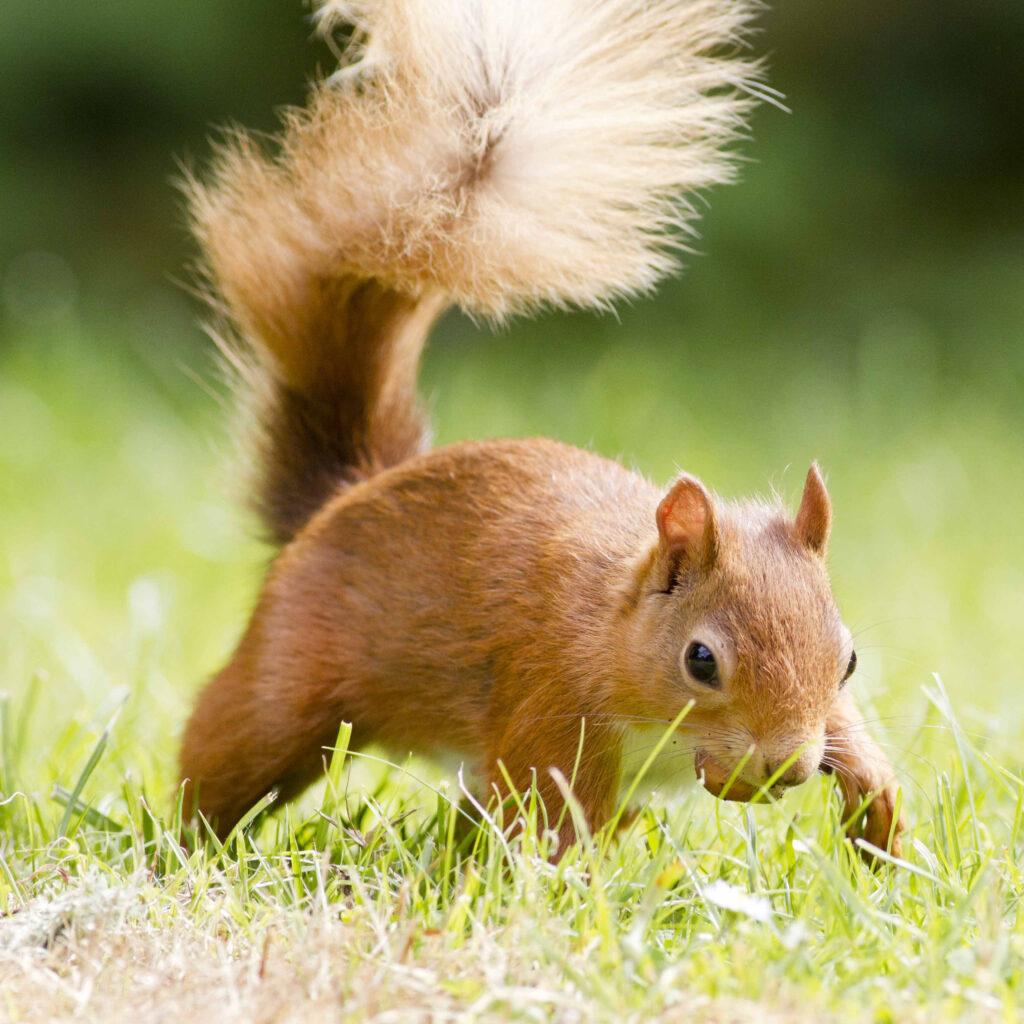As it’s National Gardening Week we thought we would share some tips on how to make your garden more red squirrel-friendly. By making a few small changes, you could be helping some of your local residents stay bright-eyed and bushy-tailed.
Have you ever winced as yet another neighbour monoblocks their front garden, or covers their back garden with plastic turf? Then you’ll understand that it’s never been more important to create safe havens for wildlife in our urban and suburban environments.
Fortunately, while some people continue to push out nature in favour of cars and convenience, others are making space in their lives for a bit of wildness. Thanks to increased awareness in recent years we’re leaving gaps in fences for hedgehogs, creating log piles for insects and providing a vital source of food for the local birds.
Creating a wildlife-friendly garden comes with the reward of experiencing closer encounters with some of the creatures that share our living space with us. If you’re lucky enough to have red squirrels visit your garden then you’ll know that their antics can provide plenty of entertainment! By managing your garden with red squirrels in mind you’ll not only be increasing your chances of observing them at close quarters, you’ll be helping ensure the local population can continue to make its home in the area.

Grow plants that benefit red squirrels
There are a number of shrubs and trees you can plant which will provide your red squirrels with some of the fruits that make up part of their natural balanced diet. Popular species include brambles, crab apple, hawthorn, holly, yew and rosehip, and these will also benefit other garden wildlife as well.
Embrace mess!
Leaves, grass, mosses and twigs provide the perfect building materials and soft lining for red squirrel nests, or ‘dreys’. Each red squirrel may build several dreys suited to different seasons. Resist the temptation to clear all your garden debris and you may be treated to the sight of a squirrel busily gathering materials to make some home improvements.
If you can’t relax without a tidy garden, consider reserving a space as a designated ‘wildlife corner’. Leaving a patch of your garden to grow wild will benefit all sorts of garden wildlife, including red squirrels. Allow grass and wild plants to establish and grow tall, create hiding places and habitat features with rocks, and leave some logs to decompose to encourage fungi (also part of a red squirrel’s diet).
Feed red squirrels responsibly
If you are providing supplementary feeding for birds and red squirrels, make sure you’re doing so in a way that keeps them safe and healthy. We would recommend feeding red squirrels sparingly to prevent them becoming over-reliant on you as a food source, and when you do feed them try to provide a balanced diet. For example, including a source of calcium such as carrots or antlers (if you can get them!) will make your garden a popular feeding destination.
Make sure feeders are well out of reach of cats and other predators, and clean them regularly to reduce the risk of disease spreading. If you live in the south of Scotland where squirrelpox is present, it’s particularly important that you clean feeders with an anti-viral disinfectant such as Virkon-S.
You can read our full guide to feeding red squirrels here.

